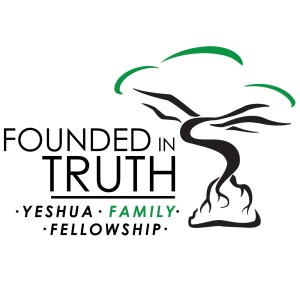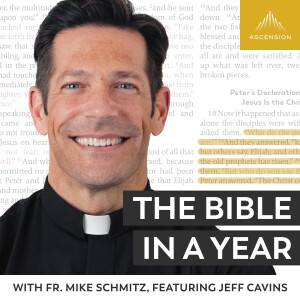

This Bible teaching from Founded in Truth Fellowship, delivered by Matthew Vander Els, explores a profound connection between the Tower of Babel and the Temple, highlighting their contrasting purposes and the implications for individual lives. The core message centers on whether our lives are dedicated to building metaphorical "towers of Babel" that exalt human sovereignty and self-glory or becoming foundational stones for God's presence and the establishment of His name's honor and reputation in the world.
The teaching begins by establishing the significance of God's throne, stating that it was in the beginning and is the place of His sanctuary, drawing from Jeremiah 17:12. This idea is further connected to the creation narrative in Genesis 2:8, which mentions God planting a garden eastward in Eden, suggesting that Eden was eastward of God's throne. This sets a theological foundation for understanding the Temple as a representation of God's dwelling place on earth, mirroring His heavenly throne room.
A key contrast is drawn between the Tower of Babel and the establishment of God's sanctuary. The builders of Babel in Genesis 11:4 sought to build a tower to reach heaven and "make a name for ourselves." Their motivation was self-exaltation and the magnification of their own honor for future generations. In stark opposition, Abraham's actions, occurring just 16 verses later, demonstrate a different purpose. Upon entering Canaan, returning from Egypt, and making a pact with Abimelech, Abraham "cried out in the name of the Lord." This public declaration was intended to establish God's sovereignty and honor in the eyes of mankind. As the 12th-century sage Nachmanides (the Ramban) commented, Abraham's calling out God's name was a proclamation of God's greatness. The Hebrew word "shem," meaning name, encompasses physical identity, character, reputation, and honor, further emphasizing the significance of whose name is being proclaimed.
The teaching addresses the common misconception of Nimrod being the orchestrator of the Tower of Babel, clarifying that the biblical text never explicitly connects him to the tower's construction. While Nimrod founded the land where it was eventually built, attributing the tower solely to him is a tradition rather than a direct scriptural assertion. The focus remains on the collective desire of the people to elevate themselves rather than God.
The concept of the future Temple is introduced through Deuteronomy 12, where God instructs the Israelites to seek the place He will choose "to put his name there for his dwelling." This place, where offerings and sacrifices would be brought, was intended as a public display of God's sovereignty. The speaker notes that even in the building of Solomon's Temple, surrounding nations contributed, recognizing the greatness of Israel's God. The Temple, therefore, stands as the antithesis of Babel, representing the reality of God's supreme sovereignty rather than human self-rule.
The Akedah, the binding of Isaac in Genesis 22, is presented as another significant event related to the future Temple site, traditionally believed to be in the region of Moriah, which is Jerusalem, and specifically Mount Moriah, the Temple Mount. The building of the altar by Abraham and the precise ordering of the wood are seen as foreshadowing the practices in the later Tabernacle and Temple.
The construction of the Tabernacle after the Exodus is highlighted in Exodus 25:1-9, where God commands Moses to have the Israelites bring offerings from their hearts to build a sanctuary where God could dwell among them. The foundation of God's dwelling was not the material offerings themselves but the willingness of the people's hearts to give. This act of giving from the heart is presented as a principle that always produces a divine abode. However, the teaching cautions against equating any fellowship with the Temple of God itself, emphasizing the principle of heartfelt giving as foundational.
The elements of the Tabernacle are discussed in relation to the Sinai experience and God's holiness (Kedusha). The Ark of the Covenant, made of acacia wood overlaid with gold, housed the tablets of testimony, a transcript of God's voice from Mount Sinai. The Ark was the vehicle through which God's voice continued to speak to Israel. The table of showbread and the menorah, symbolizing a tree (possibly the tree of life), were also significant elements. The altar of incense, placed in front of the veil, is interpreted as representing the cloud that shielded God's presence at Sinai, allowing man to approach God in an intimate manner. The brazen altar outside, where sacrifices were offered and the eternal flame burned continuously, served as a constant reminder of God's presence and revelation experienced at Mount Sinai (Mount Horeb). The eternal flame symbolized God's consuming fire and presence.
The temporary nature of the Tabernacle as a portable structure signifies God's initial desire to dwell among His people. This desire remains unchanged, with God still yearning for His "temple" to be built upon the foundation of human hearts. The incident of the "tent of meeting" before the Tabernacle's construction further illustrates that God's presence required a prepared and willing community.
For more Bible Teachings, click the link.
Application for Everyday Life- Examine your motivations: Are your actions driven by a desire for personal recognition and glory, like the builders of Babel, or by a desire to honor God and declare His sovereignty?
- Cultivate a heart of giving: Just as the Tabernacle was built upon the willing hearts of the Israelites, allow your giving (of time, resources, talents) to be motivated by a genuine desire to facilitate God's presence in your life and community.
- Recognize God's sovereignty: The Temple represented God's supreme authority. Acknowledge and submit to God's rule in your life, rather than seeking to establish your own sovereignty.
- Embrace holiness and order: The Tabernacle was a place of order and restriction, reflecting God's holiness. Strive for order and holiness in your own life as a reflection of God's nature.
- Be a living testament: Like Abraham, declare God's greatness through your words and actions, allowing your life to be a place where God's name is established and honored.
- Consider your "fruit": Your actions and words reveal the true agenda of your heart. Evaluate the "fruit" you are producing – does it point to self-exaltation or to God's glory?
- Genesis 2:8 (https://biblehub.com/genesis/2-8.htm)
- Genesis 11:4 (https://biblehub.com/genesis/11-4.htm)
- Genesis 12:8 (https://biblehub.com/genesis/12-8.htm)
- Genesis 13:4 (https://biblehub.com/genesis/13-4.htm)
- Genesis 21:33 (https://biblehub.com/genesis/21-33.htm)
- Genesis 22 (https://biblehub.com/genesis/22.htm)
- Exodus 25:1-9 (https://biblehub.com/exodus/25-1.htm)
- The Bible by various authors
Note: This article contains affiliate links.
More Episodes
All Episodes>>You may also like
Create Your Podcast In Minutes
- Full-featured podcast site
- Unlimited storage and bandwidth
- Comprehensive podcast stats
- Distribute to Apple Podcasts, Spotify, and more
- Make money with your podcast












